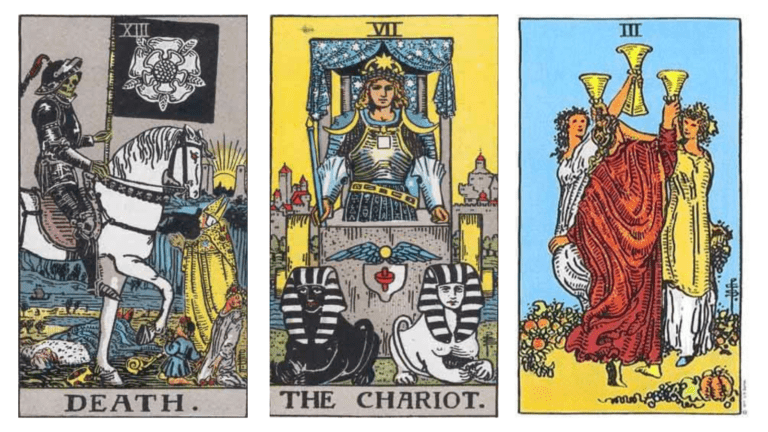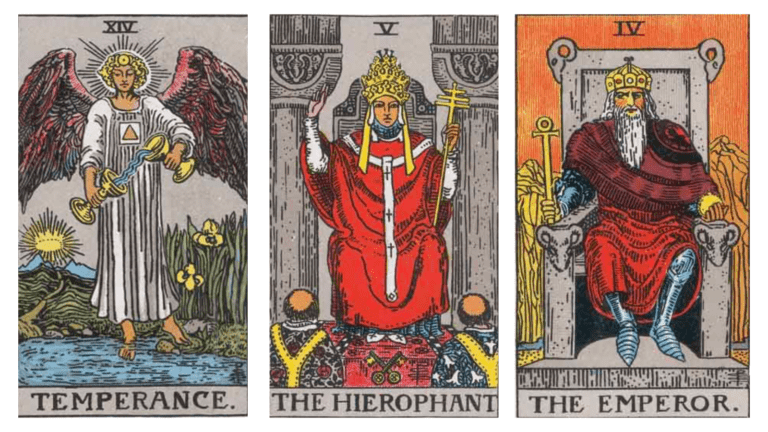“As long as you still experience the stars as something “above your head,” you lack the eye of knowledge.”
Friedrich Nietzsche
Following Part 1 of this series, Why Divination is Real, we now move into part 2 – What Exactly Are The Divination Arts?
What are the Divination Arts?
The Divination Arts refers to various practices and techniques used to gain insight into yourself, your true nature, relationships and life situations. This knowledge can lead to a more congruent mind, a greater acceptance of ourselves and others, and a deeper understanding of our purpose, strengths and challenges, in order to best contribute to the world.
The main Divination Arts associated with the Western Tradition are the four arts of tarot, astrology, numerology and Kabbalah. These are legitimate tools for facilitating profound insights into the human psyche and have a lengthy provenance. These four are intrinsically linked, containing countless references to one another that are instrumental in their correct application.
It is uncommon for today’s practitioners to use these four arts together in the way intended. The reasons for this stem from a fundamental misunderstanding around divination, the mind and its nature. Used together, critically and correctly, these four arts can provide a comprehensive and accurate picture of you and your potential as an individual. They can help point towards the elimination of inner conflict in service of self-realisation.
More broadly, divination can refer to any apparently prophetic experience had in dreams or in waking life, whether they occur impromptu or during active imagination or psychedelic experience. Some would consider other techniques such as scrying and palmistry to be divination arts, but they are not the subject of this article. The four aforementioned arts of tarot, astrology, numerology and Kabbalah are the four original and intrinsically linked practices that together form a comprehensive set of tools in support of individuation.
Divination arts are often passed off as misguided attempts at ‘predicting future events,’ using ‘supernatural’ means. But parlour tricks have no place in spiritual practice, and we need not explain them away as supernatural.
What divination arts really provide is not merely insight into the future, but insight into yourself. It is an important distinction. Insight into yourself, your mind and your true nature is where all the benefits lie and is the true goal of spiritual practice.
Tarot
The tarot is a map of the human experience – our psyche, journey and condition. It intricately reflects our strengths, challenges and our rites of passage. In this way, it is the art that holds all the other divination arts together.
Every standard 78-card tarot deck can be divided into three parts:
- The Major Arcana – 22 cards
- The Minor Arcana – 40 cards
- The Court Royals – 16 cards
The Major Arcana tell the human story – the “path of the fool.” They document the journey from innocence to wisdom, and the major rites of passage along the way. Its cards include the famous Fool, the Magician, the Lover, the Chariot and Death cards.
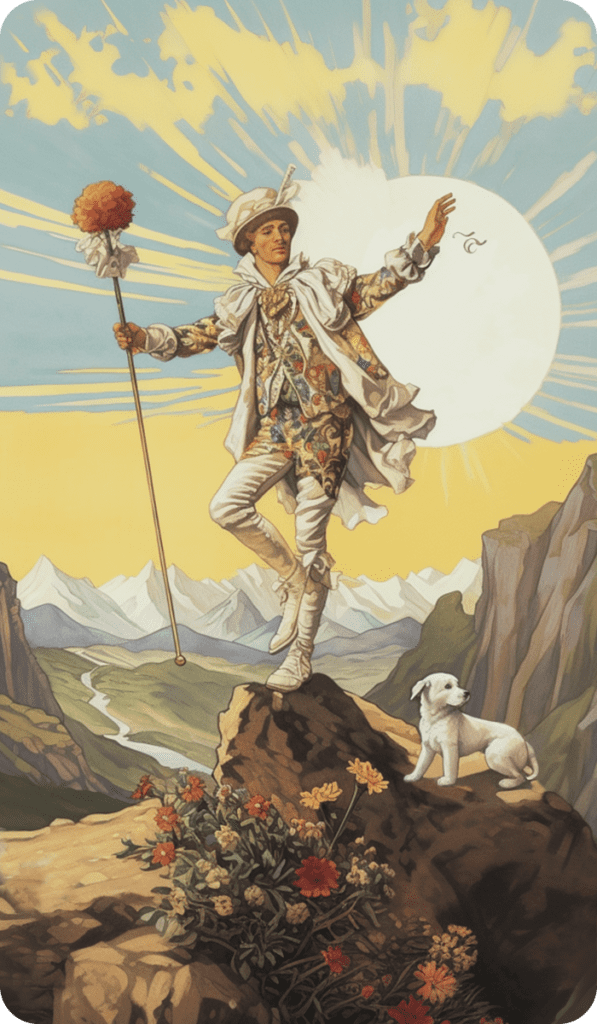
The Minor Arcana represent the everyday ups and downs of life, as well as the situations and challenges that we encounter on our journey. They are divided into four suits of ten cards, each corresponding to a particular aspect of life:
- Wands represent energy, creativity and passion
- Cups represent feelings, relationships, and our emotional state
- Swords represent the mind, intellect and communication
- Disks represent the material world, finances and practical matters
The Court Royals also span these four suits, each containing a Knight, Queen, King (or Prince) and Page (or Princess). These cards represent individuals in the world around us, as well as the multitude of personality traits of a single individual. According to the ancient technique used in the Taroscopic system, each individual is also signified by a particular Court Royal card.
There is no lesson, life situation or personal quality that cannot be mapped to the tarot. It provides apparatus with which to navigate an understanding of yours and others’ experience. It provides such comprehensive language and concepts to understand the human journey that, if nothing else, it will make you a better therapist, coach, teacher, parent, colleague and friend – even if you never conduct readings, construct birth charts or even mention the word ‘tarot.’ This is to say nothing of any divinatory purpose.
It is commonly held that the tarot was invented in 15th century Europe for purposes of playing games and was not used for divination until the 18th Century. But the intricate links between the arts challenge this notion. These links are intrinsic to the art’s workings. Without them, the arts in isolation make little sense.
What’s more, there is compelling evidence to link tarot back to ancient Egypt. The symbolism of the major arcana is mirrored in the Egyptian Book of the Dead, and all major tarot decks make reference to ancient Egypt in their symbolism. As pointed out in Michael Tsarion’s profound article The Inner Zodiac, the word “tarot” derives from the same root as the Jewish “Torah.” The Hebrew language has 22 letters, as did the Phoenician language – just like the major arcana – as well as 22 being the number of connections in the Kabbalistic Tree of Life. Hebrew derives from the Phoenician script which, in turn, was influenced by the Proto-Sinaitic inscriptions, based on Egyptian hieroglyphics. All modern Indo-European languages ultimately derive from the same source – ancient Egypt.
Even our language is not arbitrary. It too is rooted in the structure of the human psyche. And the language from which English is derived had 22 letters. Its very constituent parts – and the words we construct with them – are symbolic, reflecting aspects of our minds.
Likewise, the various features of the tarot, and the other symbolism left behind by our ancients, both reflect universal aspects of our own consciousness. In this sense, they are timeless.
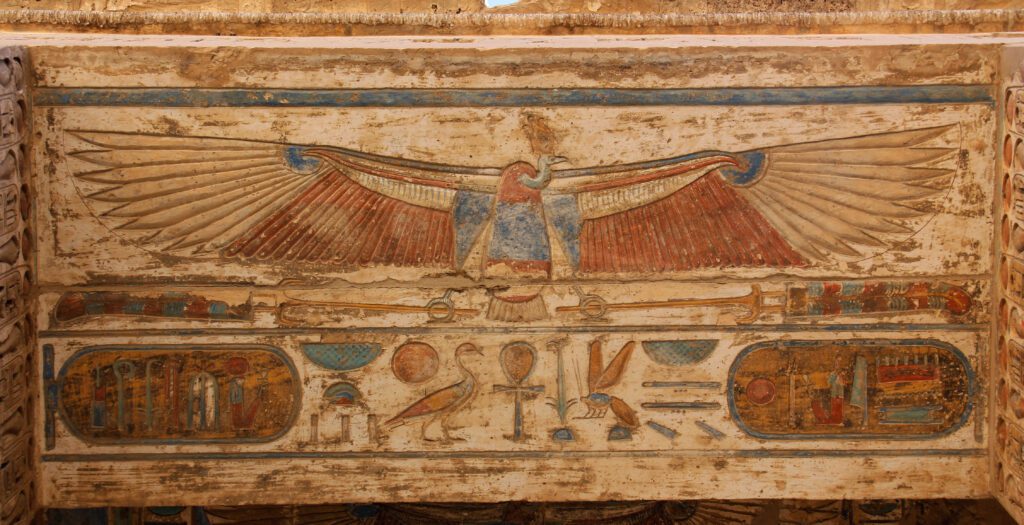
The forms into which these universal aspects manifest are bound to morph and change as time marches on. What we describe today as the ‘Two of Swords’ or ‘The Chariot,’ represent essences that could not, nor ought to, have been depicted or described in precisely the same way across all instances across time. Mutability is the very nature and point of symbolism. Yet, what is represented by these cards was certainly also expressed in a vast multitude of ways by our ancestors.
It should be no surprise to us then that the divinatory origins of the tarot date far beyond the 18th century. However this is not a palatable view to a materialist narrative.
So from where does the tarot originate? From the human mind.
Astrology
Just as the tarot contains a map of the psyche, much of human experience has been projected onto the stars and the movements of the planets. Astrology maintains that there is a relationship between the positions of celestial bodies and events that occur on Earth. Also rooted in ancient civilisations, it proposes that the character, traits, and tendencies of individuals can be understood by constructing a natal chart that reflects the exact position of the planets and other celestial bodies at the time of that individual’s birth.
Western astrology originally developed out of the fusion of centuries-old concepts from Hellenistic culture, Babylon, Central Asia, and the Islamic world. The system uses the 12-sign zodiac system that most westerners recognise – from Aries to Pisces. It aligns with the seasons and includes elements like planets, houses, aspects, and transits. However, other forms of astrology exist worldwide, including Chinese, Vedic, and Mayan systems, which have different methods and interpretations.
A common or exoteric view of astrology is that the planets and stars somehow ‘affect’ us as individuals and events here on earth. Considering our scientific modelling of the material world, it is easy to understand why so many dismiss the practice of astrology based on this apparent incompatibility. But this is not how it or any divination art is to be understood.
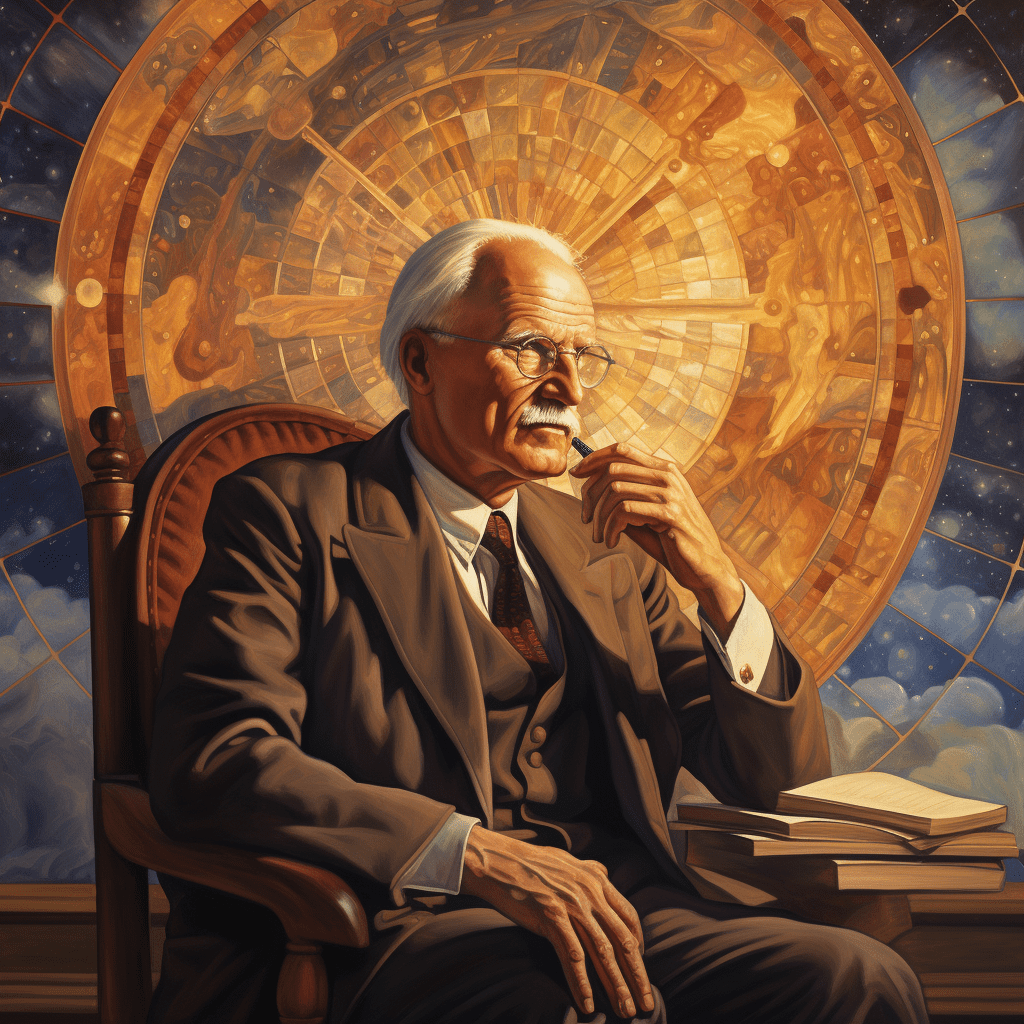
Carl Jung once wrote:
“…the whole of mythology could be taken as a sort of projection of the collective unconscious. We can see this most clearly if we look at the heavenly constellations, whose originally chaotic forms are organised through the projection of images. This explains the influence of the stars as asserted by astrologers. These influences are nothing but unconscious, introspective perceptions of the collective unconscious.”
Said another way, we see ourselves in the heavens. And our ancients spent a lot of time looking up. The entire year was determined and configured around celestial movements. Modern holidays mostly have their origins in ancient festivals that marked significant astrological events. Not just Christmas (originally a solstice festival), but Easter (an equinox festival), Beltane (May Day), Lammas (Harvest Festival) and Samhain (around the time of Halloween). All of these have their roots in festivals intended to mark the seasons. Our ancients lived and died by their ability to plan according to the seasons.
As above, so below, our own lives and psyche follow a seasonal pattern. Astrology is rooted in the human experience, and our tendency to project ourselves into the outer world. The 12 zodiac signs in western astrology represent 12 distinct human qualities or archetypes. They are, in fact, not arbitrary, but a formulaic representation of human conscious experience.
Conscious experience itself is divided into four modalities, which are echoed in discoveries of modern psychology. Those are: will, emotion, intellect and sensation. The four elements of fire, water, air and earth are nearly universal in ancient cultures, in both the west and the east, and they map to these four modalities. The ancient Greeks identified four primary temperaments or personality types. In recent times, psychologist David Kiersey mapped his Four Temperaments based on action and communication styles. These same four modalities are echoed in the Myers Briggs Type Indicator personality assessment, which is based on Jungian psychology and used by the majority of Fortune 500 companies. These four are even reflected in the ancient Buddhist teaching of the Five Aggregates, which correlate to the four modalities plus consciousness itself.
Further, each of the four modalities of consciousness can be mapped against three states that reflect the changing and cyclical nature of existence. These are known as cardinal, fixed and mutable states: cardinal being the initiatory or leading aspect; fixed suggesting stability and preservation; and mutable being the transformative, the removal of old and preparation for the new. The twelve zodiac signs align to the four modalities of consciousness, each divided into these three states. The sign of Gemini, for example, is the ‘mutable air’ sign. Whereas Aries is the ‘cardinal fire’ sign. A full breakdown of the 12 zodiac signs by element and modality is given below:

Much of modern astrology relies on complex calculations and computer software that were not available to the ancients. Many of these attempts to precision-engineer astrology detract from its real workings and purpose. They can give the illusion of a prescriptive and definitive conclusion to a person’s makeup, and for this reason tend to appeal to our modern hyper-left-brained world. They make no apologies or explanations for inaccuracies, and provide no means for discerning between the chart of a person, and the actual person sitting in front of you – their influences, their experience, their degree of alignment and who they are really.
Birth Chart reports by Make it Conscious stay true to ancient and esoteric principles, taught under the Taroscopic system. Rather than using astrological diagrams to depict your character, an individual is signified by 12-16 tarot cards, comprising positions relating to your Star Sign, Purpose Card, Court Royal Significators and Planet Cards.
The best ‘judge’ of who you are is yourself. Our reports are intended to be used as a basis for self-enquiry in support of your own individuation, rather than as a prescriptive assessment.
Numerology
Numerology is concerned with the meaning and symbolism of numbers. Numbers represent quantity, but they also represent a kind of quality. Numbers are concepts, and the meaning of those concepts stretches beyond simply ‘how many’ of something is being represented. Numerology is based on the premise that there are distinct patterns and cycles to human experience that are symbolised by numbers.
Determining the numerological associations of dates involves adding their individual digits together and iterating this process until you arrive at a single (or sometimes double) digit number. For example, 27 reduces to 9, because 2 + 7 = 9; and 32 reduces to 5, because 3 + 2 = 5.
This method does not suppose that there is some supernatural significance to this method of processing numbers, but is simply a way of capturing where in the human cycle of 1 to 9 that this particular number appears. After all, when counting in this way, every number no matter how large simply repeats the pattern of 1 to 9 in sequence.
The human invention of the base ten system and the numbers 1 to 9 are themselves an emanation of human consciousness. They represent the phases and cyclical nature of all things into qualities and stages – from conception to division, to nurturing, organisation, through to coalescence, the ultimate end of a phase and rebirth. These same stages, naturally, are reflected in the other divination arts.
Again there are many erroneous beliefs about numerology that are consistent with exoteric practice, but not with an esoteric understanding of the mind and the arts. Some of these will be covered in later sections. But, briefly, when we consider that our experience is an emanation of mind, and that includes all time, then there is space for understanding how both the numerology of certain dates and the events that occur in them can too be emanations of the same mind. From here it isn’t too great a leap to be open to finding meaning in numerology. The alternative would be to deny the symbolic significance of numbers altogether.
Today I find numerology of most use in constructing birth charts and numerological forecasts. When I initially began working with numerological charts, I spent some time trying to map my own yearly numbers to my life’s history. At first the two did not appear to match up well. Then I realised I’d made a calculation error, which when rectified rendered the retrospective forecast to make a lot more sense. This necessary and meaningful experience served to bolster my confidence in the art.
Similarly, there have been occasions where I felt that the energy of a particular day did not seem to match the kind of day I thought it was, only for me to later realise I’d not accounted for the fact that we’d moved into a new astrological month and that my numbers were out by one. For example, I thought it was a ‘7’ day, and yet I’d had a highly energetic and enjoyable day that called me to step into a leadership role beyond what would normally be expected from a ‘7.’ I later realised it had in fact been an ‘8’ day, commonly associated with high energy, extraversion, taking charge and leading.
I have also, for example, often found myself eager to begin new projects in ‘1’ periods, as well as in a position to offer psychological healing and service to people on ‘9’ periods. Not to mention a propensity to clean my space and ‘tidy up’ from the period passed.
You yourself have possibly felt the shift that occurs at new year, but simply put it down to the changing attitudes of beginning a new year and thus a mere human projection. But one could ask: what’s the difference? Cannot everything we experience be considered a kind of projection? Can you point to anything outside of your mind?
My own experience of mysterious, frequent and meaningful appearances of certain numbers left me in no doubt that there was more to the significance of them than a materialist worldview would have had me believe. This is not to say that their meanings were anything prescriptive nor unambiguous, but that it was telling me something about the nature of my own mind. Synchronicities, in all cases, were coupled with an emotional charge, release and the accompanying realignment of obsolete patterns of belief, thinking and behaviour. To those who experience such occurrences, this immediate direct knowledge of a psychic shift leaves them in no doubt as to their significance and utility.
There are other disciplines not explicitly related to numerology where we can see this same numerical sequence of influences unfold. The Enneagram, for example, is a system of personality typing that describes patterns in how people interpret the world and manage their emotions. It categorises individuals into one of nine personality types. I find the Enneagram correlates to numerology quite well. This again is not surprising, even if the Enneagram was created with no conscious regard to numerology, since the same numbers which informed the system also informed the practice of numerology. It is no coincidence that Twos are considered to be patient, Fives are considered to be learned and Eights are considered to be assertive, in both divination and the Enneagram.
Kabbalah and the Tree of Life
The Kabbalah, deriving from the Hebrew word meaning “to receive,” is an esoteric methodology for spiritual understanding. Like with the other three arts discussed, its precise origins are disputed. Many claim that Kabbalah originated in Jewish mysticism, although it’s possible it was adopted by it from earlier traditions. Like with all the arts however, as a map of conscious experience, its origins are essentially timeless.
Kabbalah’s primary symbol is the Tree of Life. This symbol is an intricate framework of ten spheres, known as Sephiroth, interconnected by twenty-two paths. Each Sephira embodies an element of existence or aspect of reality. The twenty-two paths that connect them symbolise the dynamic flows of energy that animate the structure.
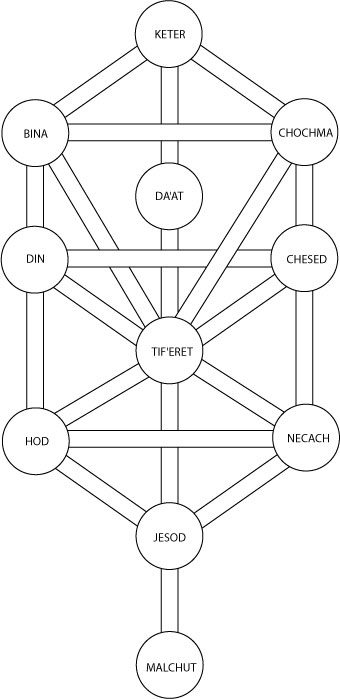
Central to the structure of the Tree of Life are its three vertical pillars:
The Pillar of Severity on the left includes the Sephiroth Binah (Understanding), Geburah (Severity), and Hod (Splendor). It is often associated with discipline, boundaries, and the feminine aspect of the divine.
The Pillar of Mercy on the right comprises the Sephiroth Chokhmah (Wisdom), Chesed (Mercy), and Netzach (Eternity). This pillar symbolises expansion, blessings, and the masculine divine aspect.
The Middle Pillar, running centrally through the tree, holds Keter (Crown) at the top, Tiferet (Beauty) in the centre, and Malkuth (Kingdom) at the base. It represents balance, equilibrium, and the harmonious union of opposites.
The Sephiroth and their connections can be seen as a blueprint for understanding reality. The Tree of Life serves as a multidimensional map, linking esoteric fields and offering insights into the connections between astrology, numerology, and tarot. Each Sephira and path has corresponding astrological, elemental, or tarot symbolism, thus creating a richly layered tapestry of interrelated meanings. Although this is not the place to go into details about the various connections between Kabbalah and the other divination arts, the study of Kabbalah and the Tree of Life deepens our understanding of the human experience and how it links with the universal principles depicted across the arts.
Make it Conscious Tarot Birth Chart reports use Kabbalah to derive certain cards that signify you as an individual. Comprehensive Kabbalistic tarot readings can also be provided, where cards are drawn in the positions of the Tree of Life, each associated with a different meaning and aspect of the client’s reality.
Summary
This article provided a concise overview of what exactly the divination arts are. We discussed the four primary arts associated with the Western Tradition, namely the tarot, astrology, numerology and Kabbalah.
The tarot – the original “map” of the human psyche, with its 78 richly symbolic cards, across the major arcana, minor arcana and court royals – charts the human condition and experience. It facilitates deep insight into aspects of ourselves, and can help us navigate life’s decisions, both small and complex.
Astrology, on the other hand, interprets the positions and movements of celestial bodies to discern patterns and themes in our lives. This article suggests that it is not that these bodies ‘affect’ our minds, as is commonly held, but that aspects of human experience are projected into the world around us.
Numerology acknowledges that numbers too are concepts. Beyond simply measuring quantity, numbers reflect aspects of human experience and cycles. As long as this is acknowledged, numerology presents opportunities for self-insight and navigation.
Finally, Kabbalah, an esoteric tradition centred around the Tree of Life, provides a symbolic representation of the universe and human experience. It comprises ten spheres (Sephiroth) and twenty-two paths, and offers an intricate backdrop for discerning deeper interrelations between the four divination arts.
In the next part of this series on Why Divination is Real, we will delve into two more recent concepts in psychology and philosophy – Idealism and the Unconscious. These two are vital for helping us to bridge the gap between modern rational thought and the need for whole-self-knowledge. Together they can prompt one’s thinking in the direction of understanding exactly how and why, after all, divination might actually be real.


